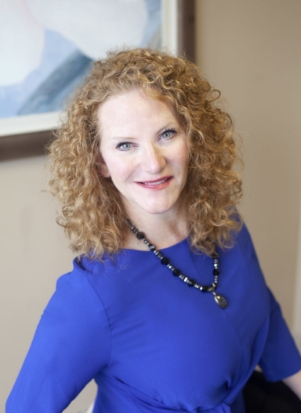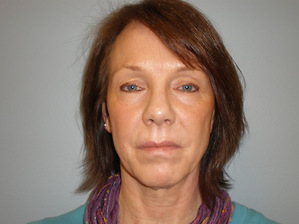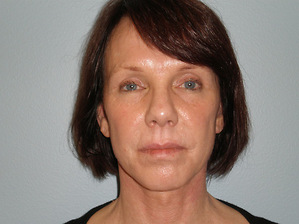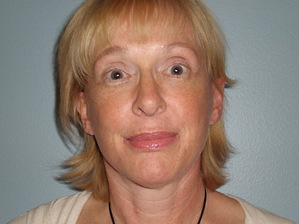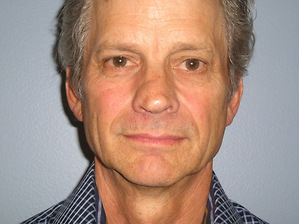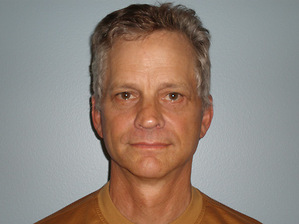As we age, time and environmental factors can cause creases and sagging skin to occur. A facelift, also known as a rhytidectomy, can correct these signs of aging, smoothing the jawline, lifting the cheeks, and removing fat from beneath the chin.
What is a Facelift?
If you are bothered by the signs of aging in your face, a facelift may be right for you. Technically known as rhytidectomy, a facelift is a surgical procedure to improve visible signs of aging in the face and neck, such as sagging in the midface, deep creases below the lower eyelids deep creases along the nose extending to the corner of the mouth, fat that has fallen or is displaced, loss of muscle tone in the lower face may create jowls, loose skin and excess fatty deposits under the chin and jaw can make even a person of normal weight appear to have a double chin.
Trusted & Experienced
all female staff
“Dr. Rocheford and her team made me feel comfortable from the moment I arrived at the office. Dr. Rocheford was extremely thorough during my consult, explaining my intended procedure in detail and what I should expect during the entire process. I appreciated the detailed pricing that was reviewed with me by one of Dr. Rocheford’s team members so that there were no questions about what the cost would be. I was understandably nervous on the day of my surgery, however, the entire team was AMAZING! Jen, Sarah, Dr. Rocheford, Bonnie, and everyone else on the team were kind, supportive and kept me informed of the process. The discharge instructions and pain control plan were detailed and easy to follow. The post-op follow up was thorough and convenient.”
“I had searched and consulted with a few other plastic surgeons before I found Dr. Rocheford. I was really surprised that she met with me in-person for my consultation. She’s skilled and knowledgeable at her work. I didn’t hesitate to have her perform my tummy tuck surgery. I’m a super anxious person and Dr. Rocheford responded to all of my text messages day and night – weekdays and weekends. She’s the best choice in my opinion and her work is exceptional in quality.”
Read More Reviews
Heather Rocheford, MD
BOARD CERTIFIED PLASTIC SURGEON
There are so many fads and false promises out there. It’s almost impossible to make a confident decision without trusted advice, and that’s what I’m here for. My goal is to help you understand what is right for you – based on your unique situation.
Meet Dr. Rocheford
Details Of A Facelift:
- Surgery: Surgery is done under sedation or general anesthetic at a hospital. The surgery takes 4 hours and can be outpatient or sometimes an overnight stay.
- Discomfort: Mild. Anticipate 0 – 3 days of pain medication.
- Bruising: 2 – 4 weeks
- Swelling: 2 – 4 weeks
- Numbness: Cheek numbness is expected and lasts weeks to months.
- Bandages: Changed in 1 – 2 days.
- Make-up: May be worn in 1 – 2 weeks.
- Work: You may feel capable of returning within 5 days, but your appearance will be the limiting factor.
- Exercise: May be resumed in 2 – 3 weeks.
- Sun Protection: Six months with SPF 15 or higher.
- Final Result: Seen 1 – 4 months following most facelifts. The duration of the result is 7 – 10 years.
Who is a Good Candidate for a Facelift?
Ideal candidates for a facelift are healthy, non-smokers who have a positive outlook on their surgical outcome. Patients who are exhibiting signs of facial aging can look younger in no time. A consultation with Dr. Rocheford is a great opportunity to discuss whether this procedure is a good fit for you.
The Facelift Procedure
When it comes to a facelift, patients have three facelift choices, including a traditional facelift, a limited incision facelift, or a neck lift. A traditional facelift starts with an incision in the hairline running from the temples, around the ears, and ending in the lower scalp. Fat can be rearranged, and underlying tissues repositioned. Deep layers of the face can also be lifted. Skin is then placed over the new facial contours and excess skin is removed. A limited incision facelift, or a mini facelift, use shorter incisions that start at the temples are go around the ear and end in the lower eyelid or upper lip. If patients choose to receive a neck lift as well, another incision under the chin will be needed to improve the neck contour.
Aging of the face can result in jowls, loose skin on the neck, and deep folds on the face. Depending on the degree of looseness, a facelift and/or neck lift can be performed through the incisions shown above. The shorter incisions are for mild cases and the longer incisions for moderate to severe facial aging. The incisions will be hidden in the creases around your ear, and are closed with dissolving stitches.
Facelift Recovery
During recovery patients may experience mild discomfort, cheek numbness, swelling, and bruising, makeup can be worn within one to two weeks to cover any discoloration. Patients may return to work within five days, and exercise may be resumed within two to three weeks. Final results from facelift surgery can often be seen one to four months following surgery, with results lasting seven to 10 years.
Schedule a Consultation
If you’re ready to discuss your options for a younger, firmer-looking face, now is a great time to schedule your Facelift surgery consultation with Dr. Heather Rocheford at our plastic surgery offices, serving the Twin Cities Metro area including St. Paul, Minneapolis, Woodbury, and beyond. Simply request a consultation online or call Rocheford Plastic Surgery at 651-739-1100 today to schedule your appointment.
Recent News
How a Face Lift is Done | Rocheford Plastic Surgery
Face lifts can be performed in a variety of ways, with the incision typically starting at the root of the…
READ MORE
Mini Facelift vs. Facelift: What’s the Difference?
There are many skin creams and treatments out there that promise the ultimate experience in facial rejuvenation – but sometimes,…
READ MORE
Facelift FAQ’s
Does a facelift make you look younger?
Yes! A facelift can remove as many as 10 years from the facial profile. Youll look like a younger, more rejuvenated version of yourself.
How can I tighten loose skin on my face?
Loose skin in the face is usually caused by a loss of volume as you age. A surgical lift is the best way to tighten skin, but non-surgical skin tightening options can also achieve results.
Is a facelift right for me?
A Minneapolis-St. Paul facelift is a highly individualized procedure and you should do it for yourself, not to fulfill someone else's desires or to try to fit any sort of ideal image. Facelift surgery is a good option for you if you are physically healthy, don't smoke, have a positive outlook and specific but realistic goals in mind for the improvement of your appearance.
What should I ask during my facelift consultation?
Use this checklist as a guide during your consultation: Am I a good candidate for this procedure? What will be expected of me to get the best results? Where and how will you perform my procedure? What surgical technique is recommended for me? How long of a recovery period can I expect, and what kind of help will I need during my recovery? What are the risks and complications associated with a facelift? How are complications handled?
What are the risks of facelift surgery?
The decision to have a facelift is extremely personal and you'll have to decide if the benefits will achieve your goals and if the risks and potential complications are acceptable. Dr. Rocheford and her staff will explain in detail the risks associated with surgery. You will be asked to sign consent forms to ensure that you fully understand the procedure you will undergo and any risks and potential complications. The risks include, but are not limited to, unfavorable scarring, bleeding (hematoma), infection, poor wound healing, anesthesia risks, and the possibility of revision surgery.
How do I get rid of my double chins?
Liposuction is one of the most effective ways to remove stubborn submental fat. For loose skin, a neck lift may also be needed.
How do I prepare for a facelift?
Before your facelift procedure, Dr. Rocheford and our team will provide detailed instructions on medications, eating and drinking, and your surgery location. Youll also be given instructions on preparing for your recovery phase before your surgery date. Make sure to stop smoking as soon as possible before your procedure.
Are facelift results long-lasting?
It may take several months for swelling to fully dissipate and up to 6 months for incision lines to mature. Life-long sun protection will help to maintain your rejuvenated appearance by minimizing photo-aging or sun damage. In addition, a healthy lifestyle will also help extend the results of your rejuvenated, more youthful appearance.
How do you reduce swelling after a facelift?
After a facelift, you can reduce swelling by elevating your head, putting cold compresses on the area, staying hydrated, and following your doctor's post-op instructions.
How do I prepare for facelift surgery?
Prior to surgery, you may be asked to get lab testing and a medical evaluation, take certain medications or adjust your current medications, stop smoking well in advance of surgery, and avoid taking aspirin, anti-inflammatory drugs, and herbal supplements as they can increase bleeding. Special instructions you receive will cover what to do on the night before and morning of surgery, the use of anesthesia during your facelift, and post-operative care and follow-up.
What should I expect after facelift surgery?
Following Dr. Rocheford's instructions is key to the success of your surgery. It is important that the surgical incisions are not subjected to excessive force, abrasion, or motion during the time of healing. Avoid wearing any clothing that must go over your head. Dr. Rocheford will give you specific instructions on how to care for yourself.
How long after a facelift can I exercise?
You should plan to wait at least one month to return to your regular exercise routine. Dr. Rocheford will give you the best idea of when its safe to return to your regular activities.
What is Facelift?
Also known as rhytidectomy, a facelift in Minneapolis-St. Paul is a surgical procedure to improve visible signs of aging in the face and neck. If you are bothered by the signs of aging in your face, a facelift may be right for you. Technically known as rhytidectomy, a facelift is a surgical procedure to improve visible signs of aging in the face and neck, such as sagging in the midface, deep creases below the lower eyelids deep creases along the nose extending to the corner of the mouth, fat that has fallen or is displaced, loss of muscle tone in the lower face may create jowls, loose skin and excess fatty deposits under the chin and jaw can make even a person of normal weight appear to have a double chin.
What happens during facelift surgery?
First, medications are administered for your comfort during the surgical procedure. The choices include intravenous sedation and general anesthesia. Dr. Rocheford will recommend the best choice for you. Depending on the degree of change you'd like to see, your facelift choices include a traditional facelift, limited incision facelift, or a neck lift. A traditional facelift incision often begins in the hairline at the temples, continues around the ear and ends in the lower scalp. Fat may be sculpted or redistributed from the face, jowls, and neck, and underlying tissue is repositioned, commonly the deeper layers of the face and the muscles are also lifted. Skin is redraped over the uplifted contours and excess skin is trimmed away. A second incision under the chin may be necessary to further improve an aging neck. Sutures or skin adhesives close the incisions.
What should I expect during my facelift consultation?
The success and safety of your facelift depends very much on your complete candidness during your consultation. You'll be asked a number of questions about your health, desires, and lifestyle. Be prepared to discuss why you want the surgery, your expectations, and desired outcome, medical conditions and drug allergies, use of current medications, vitamins, herbal supplements, alcohol, tobacco, and drugs, and previous surgeries. Dr. Rocheford may also: evaluate your general health status and any pre-existing health conditions or risk factors, discuss the options available to you for a facelift and facial rejuvenation, examine and measure your face, and take photographs for your medical record.
What is facelift recovery like?
When your procedure is completed, a bandage could gently be placed around your face to minimize swelling and bruising. A thin tube may be present to drain any excess blood or fluid that may collect under the skin. You will be given specific instructions that may include: how to care for the surgical site, medications to apply or take orally to aid healing and reduce the potential for infection, specific concerns to look for at the surgical site or in overall health, and when to follow up with Dr. Rocheford. Be sure to ask Dr. Rocheford specific questions about what you can expect during your individual recovery period.
